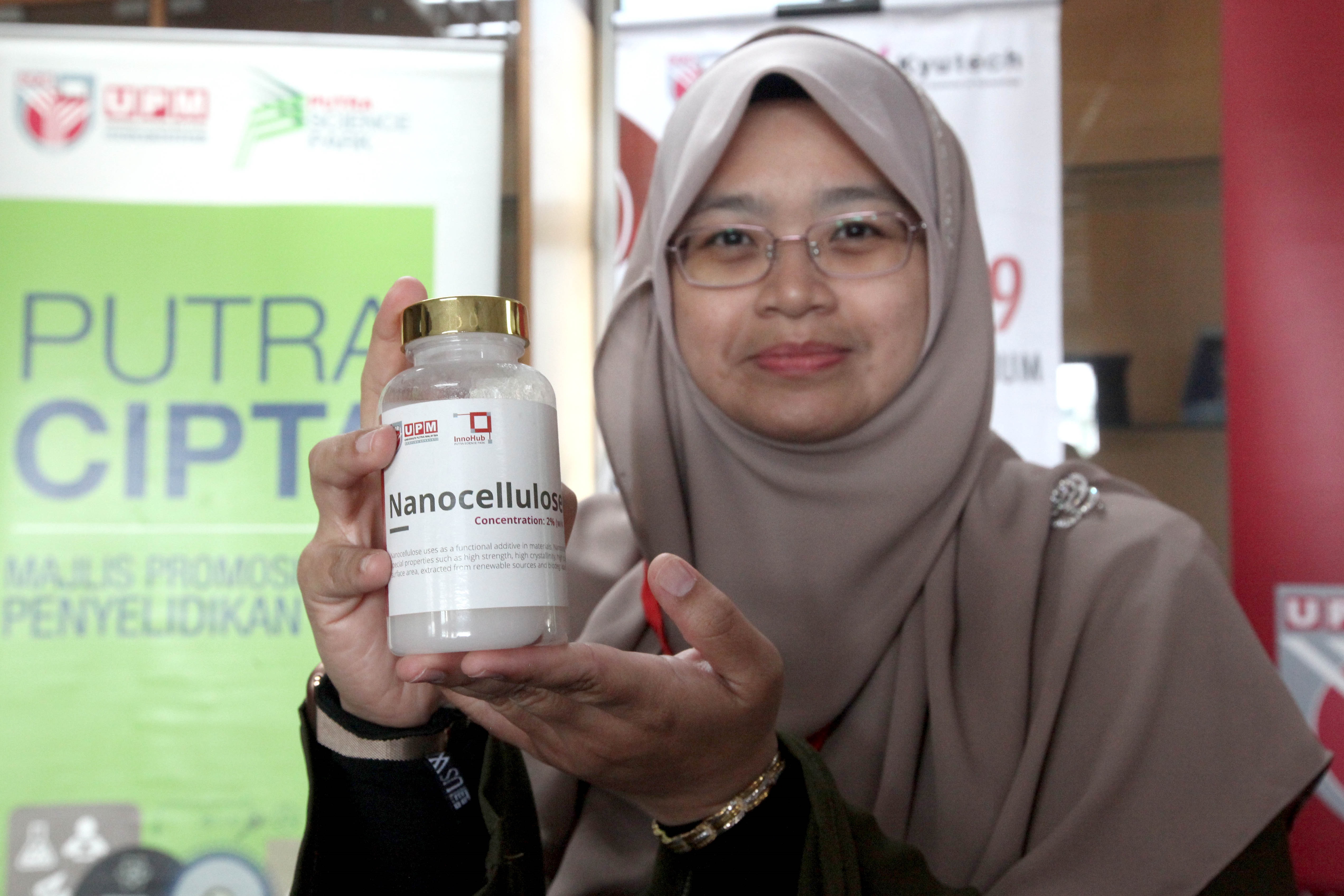By: Azman Zakaria
Photo: Marina Ismail

SERDANG - A group of researchers from Universiti Putra Malaysia (UPM) succeeded in deriving nanocellulose from oil palm biomass whose properties are equivalent to the nanocellulose produced by other developed countries that use different bioresources.
The nanocellulose produced by the UPM research team has the average diameters of between 20 and 80 nanometer (nm).
An 80 nm diameter nanocellulose is 1,000 times smaller than a strand of adult human that measures around 80 micrometer.
Nanocellulose can be derived from any cellulose-based materials such as plant biomass, pulps, papers and cotton; however, the UPM research team used cellulose extracted from oil palm biomass.
A lecturer from the Department of Bioprocess Technology, Faculty of Biotechnology and Biomolecular Sciences, UPM, Assoc. Prof. Dr Hidayah Ariffin, said that since Malaysia has bountiful oil palm trees and produce abundance of, there is potential to derive nanocellulose from oil palm biomass.
“We used cellulose extracted from the oil palm biomass. This extracted cellulose was converted to nanocellulose by using a special milling technique that successfully produced nanocellulose with an average diameter of between 20 and 80 nm”, she said.
Assoc. Prof. Dr Hidayah, who is also the head of the research team, added that the production method is convenient and relatively fast, and it does not involve the use of chemical substance.
According to her nanocellulose is a versatile material, and it could be tailor made to suit its application. Nanocellulose is in nature, has special features such as it is mechanically strong, has high specific surface area, is renewable and biodegradable.
She also said the special features of nanocellulose make it a very suitable material to be used in various products such as biocomposite products and packaging materials due to its functions as a reinforcement material, membrane filter for water filtration and face masks, food thickener, and carrier for active ingredients and drugs for cosmetic and pharmaceutical products.
She added the research was initiated in 2013 and conducted in collaboration with researchers from Japan.
The product won gold for the Most Commercial Ready Product and silver for the Most Innovative Product at the Bioeconomy Innovation Award 2017. - UPM
Date of Input: 19/12/2019 |
Updated: 19/12/2019 | hairul_nizam
MEDIA SHARING

























